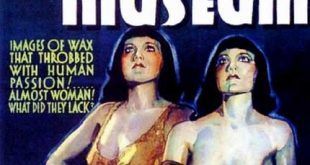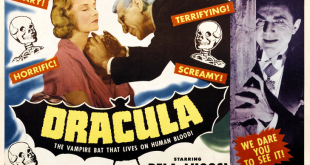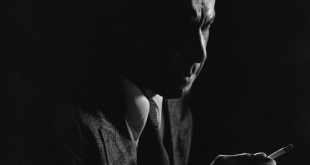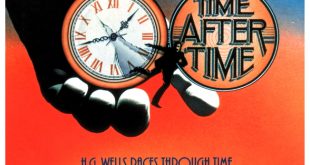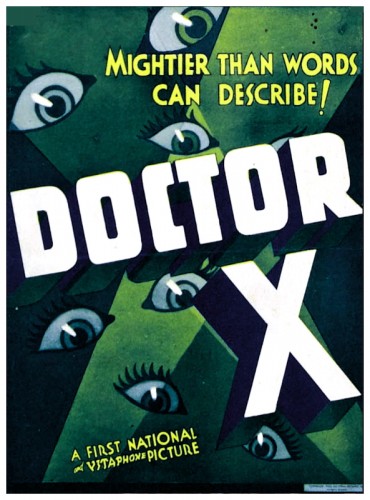 SYNOPSIS:
SYNOPSIS:
“The New York newspapers have dubbed him ‘The Moon Killer’. He stalks the streets at night, strangling and cannibalizing men and women, young and old. There have been six victims so far, and the police believe that a scientist at the Academy of Surgical Research is responsible. Is it Doctor Wells, with the missing left hand, who studied cannibals in Africa? Is it Doctor Haines, who looks at erotic magazines and once may have cannibalized a fellow while adrift at sea? Is it Doctor Rowitz, who analyzes moon rays and writes poetry? Is it Doctor Duke, an obstreperous paralytic? Or is it Doctor Xavier, aka Doctor X, who runs the academy? Doctor X’s young and lovely daughter will be instrumental in solving the crime, as will the hysterical maid and the sinister butler. Our trip through this morbid tale is guided by the wisecracking reporter who will find himself toe-tagged, gassed, tossed around and generally manhandled before the mystery is solved.” (courtesy IMDB)
REVIEW:
After Frankenstein (1931), mad scientists came fast and furious out of Hollywood and onto the screens of the world. A vintage year for mad scientists saw Doctor Jekyll And Mister Hyde (1932), The Island Of Lost Souls (1932), The Mask Of Fu Manchu (1932) and Doctor X (1932). Jekyll And Hyde is possibly the best of the lot – it certainly has more vitality than the slickly-made 1941 version. Directed by Robert Mamoulian, it starred Fredric March as the noble humanitarian Doctor Jekyll who only wants to do good, but comes unstuck when he attempts to isolate evil from the human character and, instead, turns himself into a monster.
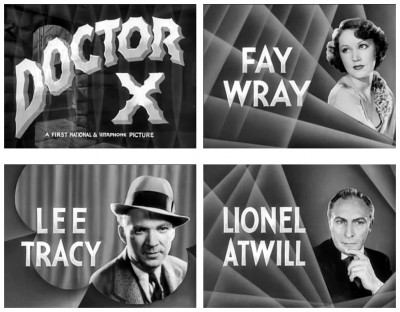 Similar themes of dark and primitive forces being unleashed from within the mind was also used in Doctor X (1932), directed by Michael Curtiz and adapted by Robert Tasker and Earl Baldwin from a play by Howard Comstock and Allen Miller (Warner Brothers paid US$5,000 for the rights). It’s a marvelously absurd horror movie that pulls out all the stops, a lively blend of science fiction, horror and whodunnit genres by a celebrated filmmaker. The movie also falls into the ‘Pre-Code’ era of film-making and features adult themes throughout. Although not completely unheard of in 1932, situations of cannibalism, rape and prostitution were rare and considered rather perverse. Nowadays serial killer television shows are a dime-a-dozen but, back then, these were not commonly explored subjects.
Similar themes of dark and primitive forces being unleashed from within the mind was also used in Doctor X (1932), directed by Michael Curtiz and adapted by Robert Tasker and Earl Baldwin from a play by Howard Comstock and Allen Miller (Warner Brothers paid US$5,000 for the rights). It’s a marvelously absurd horror movie that pulls out all the stops, a lively blend of science fiction, horror and whodunnit genres by a celebrated filmmaker. The movie also falls into the ‘Pre-Code’ era of film-making and features adult themes throughout. Although not completely unheard of in 1932, situations of cannibalism, rape and prostitution were rare and considered rather perverse. Nowadays serial killer television shows are a dime-a-dozen but, back then, these were not commonly explored subjects.
 The film focuses on journalist Lee Taylor (Lee Tracy) investigating a series of pathological murders that have taken place over a number of months in New York City. The police are also investigating the gruesome murders in which the victims have all been partially eaten. The killings always take place at night under the light of a full moon, witnesses describe a horribly disfigured ‘monster’ as the killer, and the media has dubbed the crimes as ‘The Moon Killer Murders’. Suspicion falls upon the Academy of Surgical Research run by Doctor Xavier (Lionel Atwill), as several of the professors at the institute have connections with cannibalism. Two of the suspects were once shipwrecked in a lifeboat with a third scientist who had mysteriously vanished by the time they were picked up by a passing ship, the two survivors looking suspiciously well-fed.
The film focuses on journalist Lee Taylor (Lee Tracy) investigating a series of pathological murders that have taken place over a number of months in New York City. The police are also investigating the gruesome murders in which the victims have all been partially eaten. The killings always take place at night under the light of a full moon, witnesses describe a horribly disfigured ‘monster’ as the killer, and the media has dubbed the crimes as ‘The Moon Killer Murders’. Suspicion falls upon the Academy of Surgical Research run by Doctor Xavier (Lionel Atwill), as several of the professors at the institute have connections with cannibalism. Two of the suspects were once shipwrecked in a lifeboat with a third scientist who had mysteriously vanished by the time they were picked up by a passing ship, the two survivors looking suspiciously well-fed.
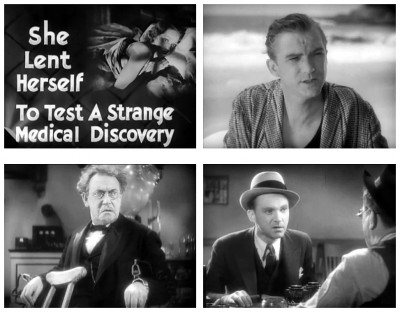 Another scientist named Wells (Preston Foster) is an expert on the subject of cannibalism, and we are introduced to him from behind a jar containing a pulsating human heart: “If this experiment is successful we will be nearer the secret of life!” he tells the detectives. Like the evil mad scientist Rotwang in Metropolis (1927) he wears a black glove on one hand, but his hand is completely artificial and he is able to detach it from his arm: “An empty sleeve is revolting to most people,” he remarks while waving a pencil up it. Of course it is Wells who turns out to be the killer, who has developed a synthetic flesh which he uses to fashion not only a new hand of incredible strength but also a living disguise that transforms him into a monster. The living material also causes Wells’ inner monster to break out and take over. “There isn’t any Wells!” he screams during the final showdown with the forces of law and order.
Another scientist named Wells (Preston Foster) is an expert on the subject of cannibalism, and we are introduced to him from behind a jar containing a pulsating human heart: “If this experiment is successful we will be nearer the secret of life!” he tells the detectives. Like the evil mad scientist Rotwang in Metropolis (1927) he wears a black glove on one hand, but his hand is completely artificial and he is able to detach it from his arm: “An empty sleeve is revolting to most people,” he remarks while waving a pencil up it. Of course it is Wells who turns out to be the killer, who has developed a synthetic flesh which he uses to fashion not only a new hand of incredible strength but also a living disguise that transforms him into a monster. The living material also causes Wells’ inner monster to break out and take over. “There isn’t any Wells!” he screams during the final showdown with the forces of law and order.
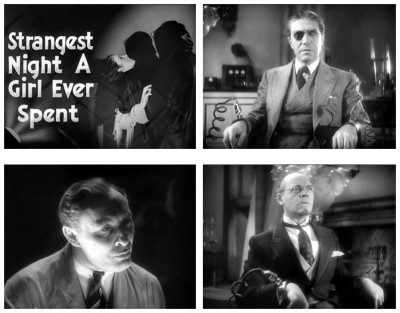 Doctor X was only the second Warner Brothers movie to utilise the brand-spanking-new Technicolor process which removed graininess and improved both colour and clarity. This improved process was first used on The Runaround (1931) and resulted in the studio’s attempt to revive colour late in 1931. However, due to lack of interest from the public, Warners quickly dropped their ambitious plans for colour films by the end of 1932. During production, contrary to Technicolor’s specific instructions, an alternative black-and-white version was shot and still exists, although side-by-side comparison shows that most takes between the two are the same. Differences in takes are minor, such as Lee Tracy‘s ad-lib with me in the closet, and Mae Busch‘s dialogue as a madam at a brothel. Much to the dismay of Technicolor executives, the monochrome version was offered to exhibitors as a slightly cheaper alternative on the initial release of the film.
Doctor X was only the second Warner Brothers movie to utilise the brand-spanking-new Technicolor process which removed graininess and improved both colour and clarity. This improved process was first used on The Runaround (1931) and resulted in the studio’s attempt to revive colour late in 1931. However, due to lack of interest from the public, Warners quickly dropped their ambitious plans for colour films by the end of 1932. During production, contrary to Technicolor’s specific instructions, an alternative black-and-white version was shot and still exists, although side-by-side comparison shows that most takes between the two are the same. Differences in takes are minor, such as Lee Tracy‘s ad-lib with me in the closet, and Mae Busch‘s dialogue as a madam at a brothel. Much to the dismay of Technicolor executives, the monochrome version was offered to exhibitors as a slightly cheaper alternative on the initial release of the film.
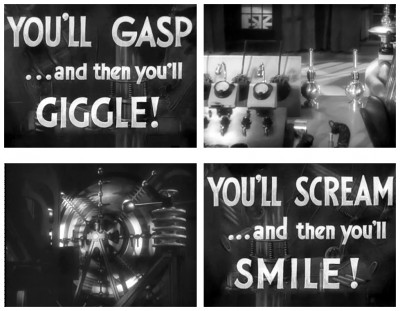 The Technicolor version was thought lost since the forties, until Jack Warner‘s death in 1978 when a print was discovered in his vault, and the film was restored by the UCLA Film And Television Archive. On its initial release, Doctor X was well-received by both critics and at the box-office. In fact, because of its popularity, Warners quickly followed it up with Mystery Of The Wax Museum (1933) by the same team: Director Michael Curtiz, designer Anton Grot, makeup by Max Factor, starring Fay Wray and Lionel Atwill. It was also shot in early Technicolor, produced quickly in order to complete their contract with Warners. This time the Technicolor corporation made sure there were no secondary black-and-white cameras on the set of Mystery Of The Wax Museum and, ultimately, the film became the last two-colour Technicolor feature released by a major studio.
The Technicolor version was thought lost since the forties, until Jack Warner‘s death in 1978 when a print was discovered in his vault, and the film was restored by the UCLA Film And Television Archive. On its initial release, Doctor X was well-received by both critics and at the box-office. In fact, because of its popularity, Warners quickly followed it up with Mystery Of The Wax Museum (1933) by the same team: Director Michael Curtiz, designer Anton Grot, makeup by Max Factor, starring Fay Wray and Lionel Atwill. It was also shot in early Technicolor, produced quickly in order to complete their contract with Warners. This time the Technicolor corporation made sure there were no secondary black-and-white cameras on the set of Mystery Of The Wax Museum and, ultimately, the film became the last two-colour Technicolor feature released by a major studio.
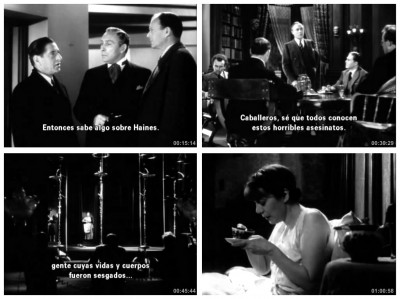 Contrary to popular belief, the term Scream Queen was never applied to actress Fay Wray during her acting career, though she had certainly done more than her fair share of screaming in King Kong (1933). The target of Kong’s affections was the lovely Fay, who would claim her position as the cinema’s first Scream Queen (long before the term was even invented) with an eardrum-shattering performance. Fay also screamed in Mystery Of The Wax Museum during a break in the filming of King Kong. The special effects on Kong took so long to do, the cast were able to make other films while waiting for their next scene. Fay also made The Most Dangerous Game (1932) and Doctor X during these breaks.
Contrary to popular belief, the term Scream Queen was never applied to actress Fay Wray during her acting career, though she had certainly done more than her fair share of screaming in King Kong (1933). The target of Kong’s affections was the lovely Fay, who would claim her position as the cinema’s first Scream Queen (long before the term was even invented) with an eardrum-shattering performance. Fay also screamed in Mystery Of The Wax Museum during a break in the filming of King Kong. The special effects on Kong took so long to do, the cast were able to make other films while waiting for their next scene. Fay also made The Most Dangerous Game (1932) and Doctor X during these breaks.
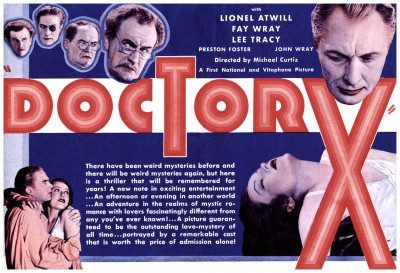 After the mid-thirties she was no longer offered the leading roles that her talent deserved, just a few minor appearances during the forties and fifties as her stardom slipped away. In 1998 she was guest of honour at a London screening of the restored and re-scored version of The Wedding March (1928), and sadly passed away in 2004 aged ninety-seven. At least she got the long life she deserved and, courtesy of King Kong, she has a permanent place in cinema history. On the other hand, Lionel Atwill effectively ruined his burgeoning film career in 1943 after he was implicated in what was described as an ‘orgy’ at his home, with naked guests and p*rnographic films – rather tame by today’s standards. Atwill lied like a gentleman in the court proceedings to protect the identities of his guests, but was convicted of perjury and sentenced to five years probation and life in off-Broadway productions and B-grade movies.
After the mid-thirties she was no longer offered the leading roles that her talent deserved, just a few minor appearances during the forties and fifties as her stardom slipped away. In 1998 she was guest of honour at a London screening of the restored and re-scored version of The Wedding March (1928), and sadly passed away in 2004 aged ninety-seven. At least she got the long life she deserved and, courtesy of King Kong, she has a permanent place in cinema history. On the other hand, Lionel Atwill effectively ruined his burgeoning film career in 1943 after he was implicated in what was described as an ‘orgy’ at his home, with naked guests and p*rnographic films – rather tame by today’s standards. Atwill lied like a gentleman in the court proceedings to protect the identities of his guests, but was convicted of perjury and sentenced to five years probation and life in off-Broadway productions and B-grade movies.
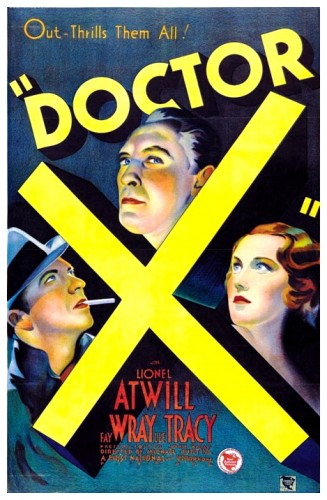 Admittedly, the effects in Doctor X are rather mediocre and the comedy relief is absolutely appalling, but this efficiently made potboiler still manages to keep one’s interest. It’s somewhat sad to realise that more people know of Doctor X from The Rocky Horror Picture Show (1975) theme song Science Fiction Double Feature instead of actually seeing the film. The Return Of Doctor X (1939), directed by Vincent Sherman and starring Humphrey Bogart, was promoted by Warner Brothers as a sequel, but the films are totally unrelated. It was Bogart’s only science fiction or horror film, and he despised it, refusing to discuss it or Swing Your Lady (1938), his least favourite films of all-time. But that’s another story for another time. Right now I’ll ask you to please join me next week when I have the opportunity to burst your blood vessels with another terror-filled excursion to the back side of Hollywoodland for…Horror News! Toodles!
Admittedly, the effects in Doctor X are rather mediocre and the comedy relief is absolutely appalling, but this efficiently made potboiler still manages to keep one’s interest. It’s somewhat sad to realise that more people know of Doctor X from The Rocky Horror Picture Show (1975) theme song Science Fiction Double Feature instead of actually seeing the film. The Return Of Doctor X (1939), directed by Vincent Sherman and starring Humphrey Bogart, was promoted by Warner Brothers as a sequel, but the films are totally unrelated. It was Bogart’s only science fiction or horror film, and he despised it, refusing to discuss it or Swing Your Lady (1938), his least favourite films of all-time. But that’s another story for another time. Right now I’ll ask you to please join me next week when I have the opportunity to burst your blood vessels with another terror-filled excursion to the back side of Hollywoodland for…Horror News! Toodles!
 Horror News | HNN Official Site | Horror Movies,Trailers, Reviews
Horror News | HNN Official Site | Horror Movies,Trailers, Reviews
